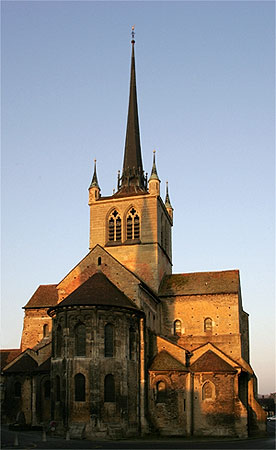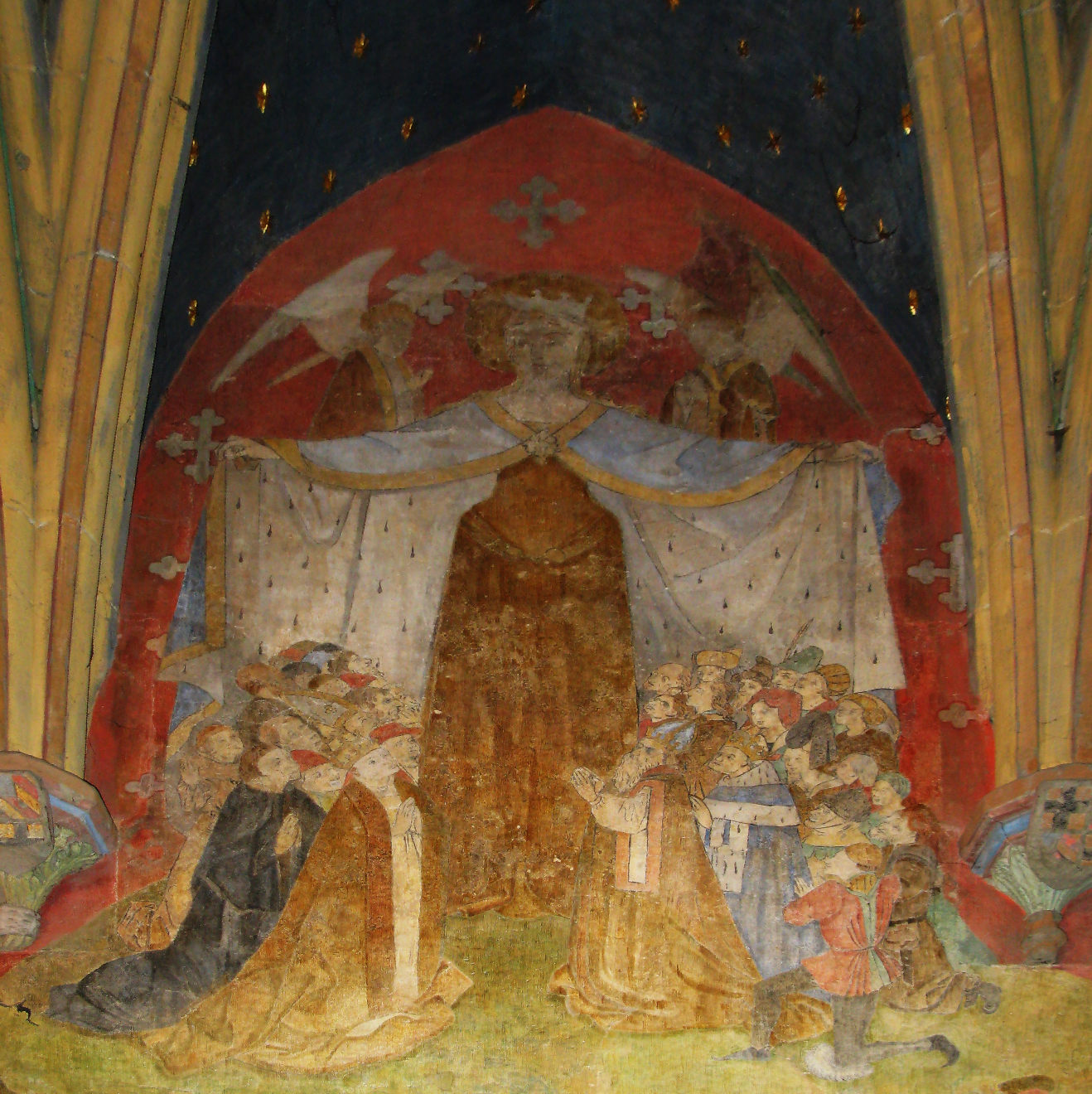Abbey Of Payerne on:
[Wikipedia]
[Google]
[Amazon]
Payerne Priory (also known as Payerne Abbey, Abbey of Our Lady of Payerne or Peterlingen Priory; Latin: monasterium Paterniacense) was a Cluniac monastery at

 It was founded between 950 and 960 by the
It was founded between 950 and 960 by the
 Archaeological excavations have led to new insights into the first church, which was built in the 10th century. In 960 it was expanded following the model of the Church of Cluny and the entrance hall was extended. A second building phase began in the middle of the 11th century, which brought the church to approximately its current appearance. A new nave was added around 1070-80.
Later, the church received four turrets and a ring of gables around the
Archaeological excavations have led to new insights into the first church, which was built in the 10th century. In 960 it was expanded following the model of the Church of Cluny and the entrance hall was extended. A second building phase began in the middle of the 11th century, which brought the church to approximately its current appearance. A new nave was added around 1070-80.
Later, the church received four turrets and a ring of gables around the  When convent buildings became the seat of the Bernese bailiff in the 16th century, they were converted and renovated on a large scale. Again in the 19th century, they were converted when the buildings were used by the school administration.
When convent buildings became the seat of the Bernese bailiff in the 16th century, they were converted and renovated on a large scale. Again in the 19th century, they were converted when the buildings were used by the school administration.
Payerne
Payerne (; frp, Payèrna) is a municipality in the Swiss canton of Vaud. It was the seat of the district of Payerne, and is now part of the district of Broye-Vully. The German name ''Peterlingen'' for the town is out of use.
History
The earl ...
, in Vaud, Switzerland
). Swiss law does not designate a ''capital'' as such, but the federal parliament and government are installed in Bern, while other federal institutions, such as the federal courts, are in other cities (Bellinzona, Lausanne, Luzern, Neuchâtel ...
. The monastery is a Swiss heritage site of national significance.
History

 It was founded between 950 and 960 by the
It was founded between 950 and 960 by the Burgundy
Burgundy (; french: link=no, Bourgogne ) is a historical territory and former administrative region and province of east-central France. The province was once home to the Dukes of Burgundy from the early 11th until the late 15th century. The c ...
royal family and especially by Queen Bertha of Burgundy. In 965, the Empress Adelaide placed the priory under Cluny Abbey
Cluny Abbey (; , formerly also ''Cluni'' or ''Clugny''; ) is a former Benedictine monastery in Cluny, Saône-et-Loire, France. It was dedicated to Saint Peter.
The abbey was constructed in the Romanesque architectural style, with three churches ...
.
On 2 February 1033, Emperor Conrad II
Conrad II ( – 4 June 1039), also known as and , was the emperor of the Holy Roman Empire from 1027 until his death in 1039. The first of a succession of four Salian emperors, who reigned for one century until 1125, Conrad ruled the kingdoms ...
held an assembly, was elected, and crowned King of Burgundy at the abbey.
In the first half of the 12th century, the monks falsified a number of documents as "Testament of Queen Bertha". With the fake documents they appropriated a number rights that they were not entitled to exercise.
The priory was first directly managed by the two abbots from Cluny, Odilo and Maiolus, both of whom lived several times in Payerne. Starting in 1050, Cluny pulled back slightly from directly administering the priory, and the local prior
Prior (or prioress) is an ecclesiastical title for a superior in some religious orders. The word is derived from the Latin for "earlier" or "first". Its earlier generic usage referred to any monastic superior. In abbeys, a prior would be l ...
led the monastery with increasing independence. The monks tried, based on the forged documents to gain the freedom to choose their own priors. Although this project failed, they loosened their ties to Cluny Abbey.
The reforming Cluniac, Saint Ulrich of Zell
Ulrich of Zell, also known as Wulderic, sometimes of Cluny or of Regensburg (c. 1029 – 1093), was a Cluniac
The Cluniac Reforms (also called the Benedictine Reform) were a series of changes within medieval monasticism of the Western Chur ...
, was prior here in the later 11th century.
From the end of the 13th century, the monastery was in conflict with the city. While the city formally recognized the sovereignty of the prior after the receipt of the town charter in 1348, in fact, he possessed no real power.
Beginning in 1444, the antipope
An antipope ( la, antipapa) is a person who makes a significant and substantial attempt to occupy the position of Bishop of Rome and leader of the Catholic Church in opposition to the legitimately elected pope. At times between the 3rd and mid- ...
Felix V raised the priory to an abbey. However, this new status was only recognized at the local level and not by their religious superiors or the Roman Curia. This elevation brought no benefits to the monastery. Starting in 1445, it was administered by the Commandry Abbot, who was under the vicar general of Payerne. In 1512 it was brought under the dean of the monastery of Sainte-Chapelle in Chambéry.
The monastery was under the protection of the kings of Burgundy and the Holy Roman Emperor
The Holy Roman Emperor, originally and officially the Emperor of the Romans ( la, Imperator Romanorum, german: Kaiser der Römer) during the Middle Ages, and also known as the Roman-German Emperor since the early modern period ( la, Imperat ...
, but the Abbot of Cluny retained the right to choose the ''kast vogt'' or ecclesiastical bailiff
A bailiff (from Middle English baillif, Old French ''baillis'', ''bail'' "custody") is a manager, overseer or custodian – a legal officer to whom some degree of authority or jurisdiction is given. Bailiffs are of various kinds and their offi ...
. The office of ''kastvogt'' was first held by the Counts of Burgundy, whose last representative, William IV, was murdered in 1127 in Payerne. After that, it was held by the Zähringers in the early 12th century, followed by the Montagny family, then the Savoy
Savoy (; frp, Savouè ; french: Savoie ) is a cultural-historical region in the Western Alps.
Situated on the cultural boundary between Occitania and Piedmont, the area extends from Lake Geneva in the north to the Dauphiné in the south.
Savo ...
s starting in 1240 and after 1282 by the emperor. In 1314 the office of the ''kastvogt'' went again to the Savoy family who held the office until the Protestant Reformation. After the reformation, the bailiff was appointed by the Canton of Vaud and a local governor.
The Reformation and the weakening of Savoy power led to the dissolution of the monastery. The nearby cities of Bern
german: Berner(in)french: Bernois(e) it, bernese
, neighboring_municipalities = Bremgarten bei Bern, Frauenkappelen, Ittigen, Kirchlindach, Köniz, Mühleberg, Muri bei Bern, Neuenegg, Ostermundigen, Wohlen bei Bern, Zollikofen
, website ...
and Fribourg began to exercise influence in Payerne and on the priory. The Protestant Bern supported a small community of Reformed citizens, while the catholic Fribourg declared itself the guardian of the monastery. After the Bernese conquest of Vaud, Bern won the upper hand. In 1536 they dissolved the priory and acquired the building of the monastery as well as a portion of its rights and property. Fribourg took in the monks and other catholic believers from Payerne. At the priory, some of the buildings were demolished, the remainder put to various secular uses: a bell foundry in the 17th century, a grain store in the 18th and later as a prison and barracks.
At the end of the 19th century it was placed under protection because of its exceptional cultural value. At the beginning of the 20th century restoration began on the buildings and in 1926 a preservation society was founded to support this work.
Priory buildings
Gothic
Gothic or Gothics may refer to:
People and languages
*Goths or Gothic people, the ethnonym of a group of East Germanic tribes
**Gothic language, an extinct East Germanic language spoken by the Goths
**Crimean Gothic, the Gothic language spoken b ...
bell tower. The interior of the church was decorated with paintings around the entrance in 1200, and to the choir by 1454. Several of the columns are decorated with roman capitals
Capital may refer to:
Common uses
* Capital city, a municipality of primary status
** List of national capital cities
* Capital letter, an upper-case letter Economics and social sciences
* Capital (economics), the durable produced goods used f ...
.
References
External links
{{Coord, 46, 49, 14, N, 6, 56, 14, E, source:dewiki_region:CH-VD, display=title Cluniac monasteries in Switzerland Buildings and structures in the canton of Vaud Cultural property of national significance in the canton of Vaud Payerne Tourist attractions in the canton of Vaud